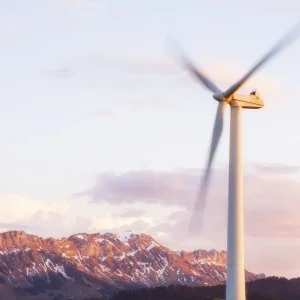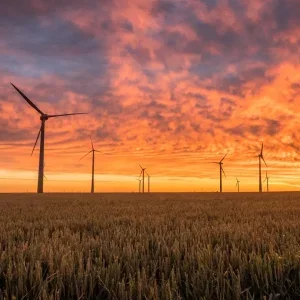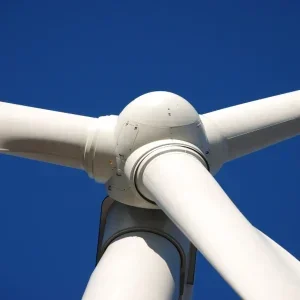
The wind energy industry, a cornerstone of renewable energy solutions, is increasingly facing societal polarisation. This article explores the intricate dynamics of societal division and its multifaceted effects on the wind energy sector, focusing on historical context, current challenges, and potential future scenarios.
Understanding Societal Polarisation
Definition and Causes
Societal polarisation refers to the growing divide between different groups within society, often characterised by conflicting viewpoints on various issues. In the context of wind energy, polarisation can arise from disagreements over environmental impacts, economic benefits, aesthetic concerns, and community involvement in decision-making processes. Key causes of polarisation include:
– Environmental Concerns: Disagreements over the ecological footprint of wind farms, including impacts on wildlife and natural landscapes.
– Economic Factors: Conflicting perspectives on the economic benefits versus the costs, including job creation, local investment, and potential devaluation of property.
– Aesthetic and Cultural Values: Differing opinions on the visual impact of wind turbines and their alignment with local cultural and aesthetic values.
Historical Context
Historically, societal polarisation around energy projects is not new. Similar patterns of opposition and support have been observed with other energy infrastructures, such as nuclear power plants and large hydroelectric dams. The wind energy industry is now encountering these same challenges as it expands globally.
Current Challenges in the Wind Energy Industry
Community Opposition
One of the most significant challenges arising from societal polarisation is community opposition. Despite the environmental benefits of wind energy, such as reduced carbon emissions and decreased reliance on fossil fuels, local communities often express strong opposition to wind farm projects. This opposition can stem from various concerns, including:
– Noise Pollution: Concerns about the noise generated by wind turbines, particularly in rural areas.
– Health Impacts: Debates over potential health effects, such as sleep disturbances and other conditions attributed to turbine noise and shadow flicker.
– Visual Impact: Resistance based on the perceived visual blight of wind turbines, particularly in scenic or culturally significant landscapes.
Regulatory and Legal Challenges
Societal polarisation can lead to increased regulatory and legal challenges for wind energy projects. Opponents of wind farms may engage in legal battles to block or delay projects, citing environmental, health, or aesthetic reasons. This can result in prolonged approval processes and increased costs for developers.
Economic Disparities
Economic disparities within communities can exacerbate polarisation. For instance, while some community members may benefit economically from hosting wind farms through lease payments or job opportunities, others may feel that the economic benefits are unevenly distributed or do not offset the perceived negative impacts. This can lead to tensions and divisions within communities.
Strategies for Addressing Societal Polarisation
Enhanced Community Engagement
Effective community engagement is crucial for addressing societal polarisation and fostering support for wind energy projects. Strategies include:
– Transparent Communication: Providing clear and transparent information about the benefits and potential impacts of wind energy projects. This includes addressing misconceptions and providing evidence-based responses to concerns.
– Stakeholder Involvement: Involving local stakeholders in the planning and decision-making processes. This can include community meetings, advisory panels, and participatory planning sessions to ensure that community voices are heard and considered.
– Benefit Sharing: Developing mechanisms for sharing the economic benefits of wind energy projects with local communities. This can include community investment funds, local job creation, and infrastructure improvements funded by project revenues.
Technological Innovations
Technological innovations can help mitigate some of the concerns driving societal polarisation. These include:
– Noise Reduction Technologies: Advancements in turbine design and technology to reduce noise levels, addressing one of the primary concerns of local communities.
– Visual Impact Mitigation: Designing wind turbines and farms to minimise visual impact, such as using colours and designs that blend with the landscape or placing turbines in less visually sensitive areas.
– Wildlife Protection: Implementing technologies and practices to protect wildlife, such as bird-friendly turbine designs and monitoring systems to prevent collisions.
Policy and Regulatory Support
Governments and regulatory bodies play a crucial role in managing societal polarisation. Key measures include:
– Comprehensive Impact Assessments: Mandating thorough environmental and social impact assessments for wind energy projects to address concerns proactively.
– Supportive Policies: Implementing policies that support the development of wind energy while addressing societal concerns, such as setting clear guidelines for community engagement and benefit sharing.
– Conflict Resolution Mechanisms: Establishing mechanisms for resolving conflicts and disputes related to wind energy projects, including mediation and arbitration services.
Case Studies
United Kingdom: Balancing Development and Community Concerns
In the United Kingdom, wind energy development has faced both strong support and opposition. The government’s commitment to renewable energy has driven significant investment in wind power, but local opposition has also been prominent. Successful projects often involve extensive community engagement and benefit-sharing schemes, such as those implemented by ScottishPower Renewables, which include community investment funds and local employment opportunities.
United States: Navigating Federal and Local Dynamics
The United States presents a complex landscape for wind energy, with significant variations in support and opposition across states. Texas, for instance, has embraced wind energy due to its economic benefits, while states like Massachusetts have encountered strong local opposition due to concerns about environmental and aesthetic impacts. The Block Island Wind Farm, the first offshore wind farm in the US, exemplifies successful community engagement and transparent communication.
Germany: Energiewende and Societal Acceptance
Germany’s Energiewende (energy transition) policy has made wind energy a central component of the country’s renewable energy strategy. However, societal polarisation remains a challenge, particularly in rural areas. The German government has responded by promoting local ownership models, where community members can invest in and benefit from wind energy projects, thereby increasing local acceptance.
Future Outlook: Navigating Societal Polarisation
Increasing Community Involvement
The future of wind energy development will increasingly depend on the industry’s ability to engage and involve communities meaningfully. This includes not only addressing concerns but also actively involving community members in the ownership and management of wind energy projects.
Technological and Regulatory Evolution
Ongoing technological advancements and evolving regulatory frameworks will be crucial in addressing the root causes of societal polarisation. Innovations in turbine design, noise reduction, and wildlife protection, coupled with supportive policies, will help mitigate the impacts of polarisation.
Educating and Informing the Public
Education and public awareness campaigns are essential for addressing misconceptions and providing balanced information about wind energy. By highlighting the environmental, economic, and social benefits of wind energy, these campaigns can help shift public perception and reduce polarisation.
Conclusion
Societal polarisation poses significant challenges to the wind energy industry, impacting project development, regulatory processes, and community relations. However, through enhanced community engagement, technological innovation, and supportive policies, the industry can navigate these challenges and continue to play a pivotal role in the global transition to renewable energy. As the industry evolves, fostering a collaborative and inclusive approach will be key to overcoming societal divisions and achieving sustainable development.






